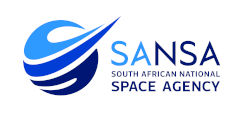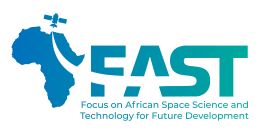
The South African National Space Agency is 10 years old and has a staff complement of 200+ persons across 4 divisions located on 3 campuses. The Space Science division is located in Hermanus, Western Cape, South Africa, with a staff complement of 60+ persons and is responsible for space science promotion, education, research and science advancement. Facilities include: (1) An engineering department responsible for scientific equipment development and maintenance in Africa with 80 different instruments at 50 different locations. (2) An applied sciences and technology department focused mainly on ground-based and satellite magnetometry and the calibration of magnetometers, including 4 InterMagnet reference stations. (3) A science department currently with 8 full-time researchers at PhD level, 3 postdoc researchers and up to 25 postgraduate students, responsible for research, education and training as well as publications in space science. (4) A full-time communications department responsible for news bulletins, public relations and social media. (5) Africa’s only 24x7 space weather forecasting center with its own building and 7 full-time staff responsible for covering the entire African continent. (6) A full-time staffed science advancement department with its own building, containing an exhibition area, a classroom and a mobile science laboratory van.
SANSA space science is involved in multiple outreach and science advancement activities. These include: (1) The annual international space weather camp where we co-host and teach 24 university students from Germany, South Africa and the USA for several weeks. (2) An annual open day with up to 1000 visitors. (3) Public weekly tours of the facility, in particular the space weather forecasting center, with up to 40 persons. (4) Monthly public lectures on a variety of scientific topics. (5) Hosting of foreign PhD students in the their vacation period, mostly from the USA, for several weeks. (6) Hosting of international conferences and workshops, typically annually with up to 100 attendees. (7) Over 10,000 learners visit the science advancement facility annually. (8) The mobile science laboratory visits large numbers of schools annually with a focus on rural areas throughout the country. (9) The research department runs postgraduate space-related projects at MSc and PhD levels with most universities in South Africa in the areas of physics, engineering, mathematics and computer science.
SANSA Space Science has multiple science facilities, including: (1) Two lecture theatres with a capacity of up to 100 persons used for conferences, workshops and public lectures. (2) A walk-in Helmholtz coil used for magnetic calibrations, which is unique to Africa. (3) A cryogenically cooled squid magnetometer unique to Africa. (4) 2 multi-thread 3D-printers for prototyping purposes. (5) An optical research facility located at the SA Astronomical Observatory in Sutherland used for observations of sprites, gravity waves and neutral thermospheric winds. (6) An HF over-the-horizon radar located at the SANAE research station in Antarctica, which is part of the international SuperDARN network of 35 radars. (7) A mobile science laboratory in a van.
Role in the project
WP7: SANSA will bring the unparalleled experience gained in more than 10 years of outreach programmes trying to popularize PSST amongst young Africans across the continent.



